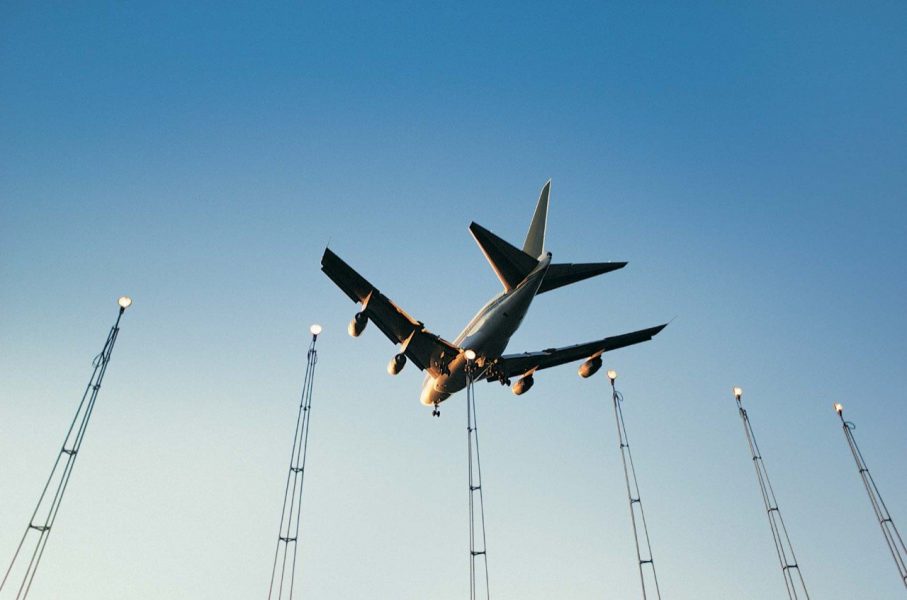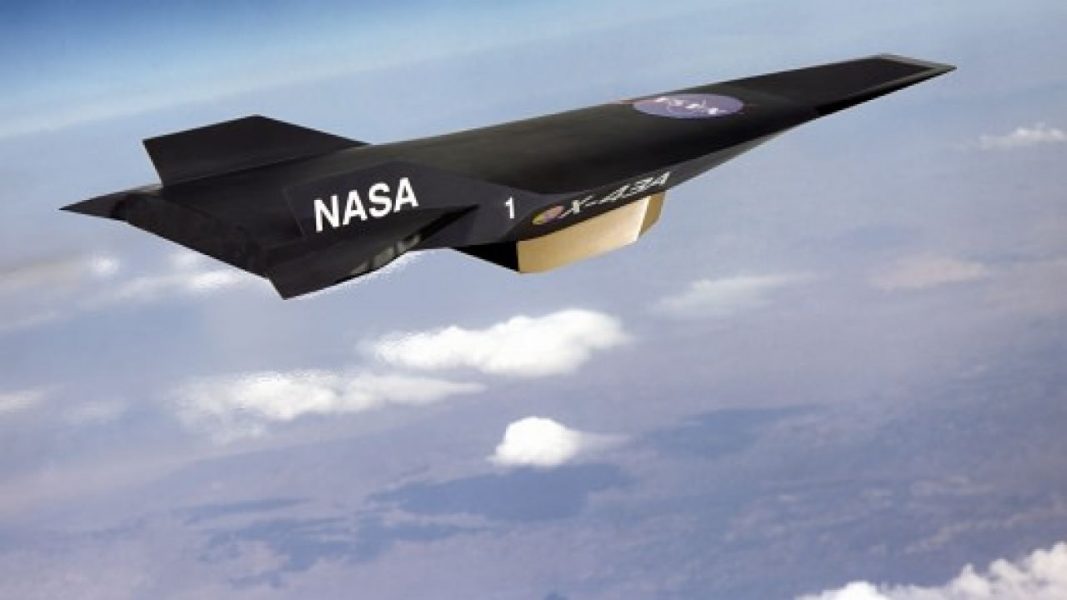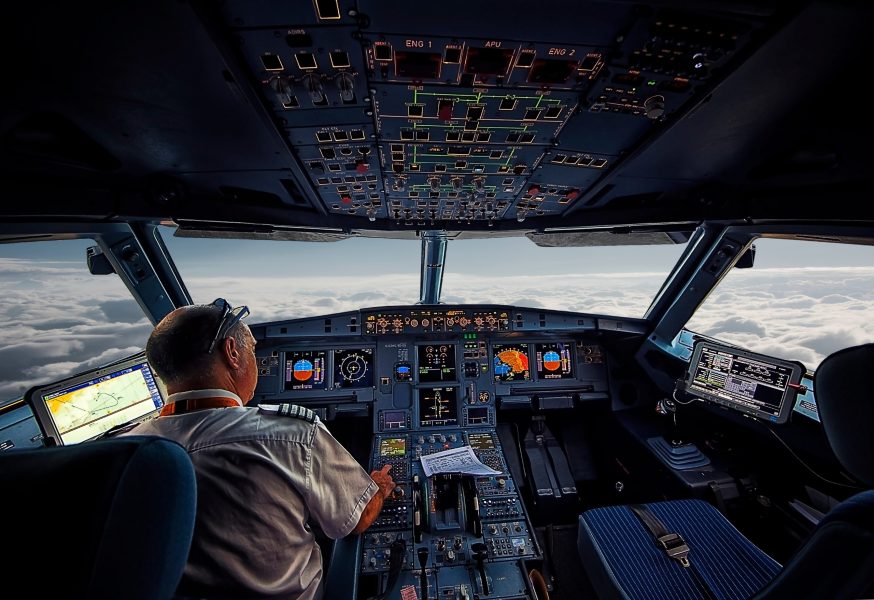On 22nd January, one Cessna 172 (VT-AMU) aircraft crash-landed at around 8 PM in an agricultural field near Aligarh's Dhanipur airport. As per the preliminary reports, the plane was being piloted by one of the flight instructors of Pioneer Flying Academy along with a trainee cadet. Both the occupants survived the accident with minor injuries.
The duo is believed to had gone for a routine night cross country flight. Bad visibility due to the thick blanket of fog and the non-availability of runway lights at the Aligarh airport is touted to be major contributory factors to the accident. DGCA's (Directorate General of Civil Aviation) investigation team reached the crash site on Sunday morning to inspect the damaged plane and nearby areas. A detailed report of this unfortunate accident is expected soon.
VT-AMU being used for Skydiving (Skyhigh)
Also not long ago, Ambitions Flying Club's training aircraft had overshot the runway on landing in Aligarh. There are three DGCA approved flying training organisations operating at this airport. They provide various types of flight training and aircraft maintenance courses.
Read next
The U.S. government said on Friday, January 21 it would suspend 44 China-bound flights from the United States by four Chinese carriers in response to the Chinese government's decision to suspend some U.S. carrier flights over COVID-19 concerns.
The suspensions will begin on January 30 with Xiamen Airlines’ scheduled Los Angeles-to-Xiamen flight and run through March 29, the Transportation Department said.
The decision will cut some flights by Xiamen, Air China, China Southern Airlines and China Eastern Airlines.
The suspensions will begin on January 30 with Xiamen Airlines’ scheduled Los Angeles-to-Xiamen flight.
Since December 31, Chinese authorities have suspended 20 United Airlines, 10 American Airlines and 14 Delta Air Lines flights, after some passengers tested positive for COVID-19. As recently as Tuesday, January 18, the Transportation Department said the Chinese government had announced new U.S. flight cancellations.
Liu Pengyu, a spokesman for the Chinese Embassy in Washington, said the policy for international passenger flights entering China has "been applied equally to Chinese and foreign airlines in a fair, open and transparent way."
He called the U.S. move "very unreasonable" and added "We urge the U.S. side to stop disrupting and restricting the normal passenger flights" by Chinese airlines."
Airlines for America, a trade group representing the three U.S. carriers affected by China's move along with others, said it supported Washington's action "to ensure the fair treatment of U.S. airlines in the Chinese market."
(Image Courtesy - CTV News)
The Transportation Department said France and Germany have taken similar action against China’s COVID-19 actions. It said China's suspension of the44 flights "are averse to the public interest and warrant proportionate remedial action." It added that China's "unilateral actions against the named U.S. carriers are inconsistent" with a bilateral agreement.
China has also suspended numerous U.S. flights by Chinese carriers after passengers later tested positive.
The department said it was prepared to revisit its action if China revised its "policies to bring about the necessarily improved situation for U.S. carriers." It warned that if China cancels more flights, "we reserve the right to take additional action."
China has all but shut its borders to travellers, cutting total international flights to just 200 a week, or 2% of pre-pandemic levels, the Civil Aviation Administration of China (CAAC) said in September 2021.
(Image Courtesy - Reuters)
The number of U.S. flights being scrapped has surged since December, as infections caused by the highly contagious Omicron variant of the coronavirus soared to record highs in the United States.
Beijing and Washington have sparred over air services since the start of the pandemic. In August 2021, the U.S. Transportation Department limited four flights from Chinese carriers to 40% passenger capacity for four weeks after Beijing imposed identical limits on four United Airlines flights.
Before the recent cancellations, three U.S. airlines and four Chinese carriers were operating about 20 flights a week between the countries, well below the figure of more than 100 per week before the pandemic.
(With Inputs from Reuters)
Read next
Amid concerns over aircraft safety due to 5G wireless services in the US, the Telecom Regulatory Authority of India (TRAI) has said that there won't be any safety issues to an aircraft flying over India due to the upcoming 5G mobile services. The telecom regulator emphasised that the new-age technology is “prima facie safe” for planes in the country.
Recently, several flights to the US were cancelled or rescheduled as airlines feared that the 5G phone service could pose a risk to aircraft instruments, impacting some popular jets like Boeing 777.
Assuring that 5G services won't be a problem for planes in India, TRAI chairman PD Vaghela told ToI: “India will have no problems. Prima facie, there are no problems for the aviation industry within India over 5G spectrum rollout."
While the distance between spectrum reserved for 5G and that for aircraft is very less in the US, the same is much wider when it comes to India, the daily quoted him as saying.
In the US, the band for 5G is from 3700-3980MHz, while the radio altimeters on the aircraft work in the 42004400MHz bands, making a gap of only 220MHz. However, the 5G bands in India run between 3300MHz and 3670MHz, making a gap of 530MHz with the frequency used by airlines.
Despite a significant gap, Vaghela noted that even though threats are missing in India, TRAI will have the issue examined in detail for a concrete assessment.
Meanwhile, the Indian telecom industry also assured that there are no safety issues for airlines due to 5G. "Most of the concerns here are being driven by fear floating in the US. The fact is there is no need to panic in India," the publication quoted SP Kochhar, DG of Cellular Operators Association of India, as saying.
The auctions for the 5G spectrum in India are expected to happen later in 2022, after which a rollout of the services could be expected over the next 1-2 years.
Bharti Airtel has also written to the TRAI, stating that for them to co-exist with the country’s aviation system, no radar should operate in the 3.3 GHz to 3.67 GHz band, and any existing operations should be moved 100 MHz or more from the operating range of 5G networks.
Read next
The NASA X-43 was an experimental, unmanned, hypersonic aircraft with multiple planned scale variations meant to test various aspects of hypersonic flight. Developed as a part of the X-plane series, It set several airspeed records for jet aircraft.
Guinness World Records recognized NASA's X-43A scramjet with a new world speed record for a jet-powered aircraft - Mach 9.6, or nearly 7,000 mph, with the aircraft breaking its own world record on its third and final flight which took place on November 16, 2004.
NASA's B-52B launch aircraft takes off from here Nov. 16 carrying an X-43A hypersonic research vehicle attached to a modified Pegasus rocket. (National Aeronautics and Space Administration photo by Tom Tschida)
One of the primary goals of NASA's Aeronautic Enterprise was the development and demonstration of technologies for "air-breathing" hypersonic flight.
The X-43 was a part of NASA's Hyper-X program, involving the American space agency and contractors such as Boeing, Micro Craft Inc, Orbital Sciences Corporation and General Applied Science Laboratory (GASL). Micro Craft Inc. built the X-43A and GASL built its engine.
In March 2004, the X-43A had set the record of Mach 6.8 (nearly 5,000 mph). The fastest air-breathing, the manned vehicle at the time, the U.S. Air Force SR-71, achieved slightly more than Mach 3.2. As can be seen, The X-43A more than doubled and then tripled the top speed of the jet-powered SR-71.
The X-43A Design and Scramjet technology
The design of the X-43A was unique in that it relied on its body as opposed to wings for the generation of lift. A major issue with all supersonic and hypersonic models is the generation of massive heat due to the compression shock waves involved in supersonic drag which can become so intense that would lead to the melting of aircraft metal.
The X-43A was no different and the engineers likely tried to overcome this problem by cycling water behind the engine cowl and sidewall leading edges, cooling those surfaces.
The unmanned aircraft was designed to be completely controllable during its high-speed flight but not to land and be recovered. It is believed that all test vehicles crashed into the Pacific Ocean.
The X-43A was relatively small with only 3.7 m in length and weighed roughly 1.300 kg
Scramjet Technology
A scramjet engine is an improvised Ramjet engine as it efficiently operates at hypersonic speeds and allows supersonic combustion- giving it its name-"Supersonic Combustion Ramjet" or Scramjet.
Scramjet engine | Representative | ResearchGate
One of the key advantages of a scramjet over a rocket engine is that the scramjet gets the oxidizer to combust its fuel from the air it is flying through, whereas a rocket engine needs to carry liquid oxygen to burn its liquid hydrogen fuel.
It is designed as an air-breathing jet engine in which the air supplied to the combustion chamber is not compressed by moving parts such as compressors, but solely by exploiting the high flow velocity of the gas itself in a fixed, narrowing inlet.
The physics involved between flying at hypersonic velocities at 100,000 ft and hypersonic speeds into space are very similar.Chris Goyne, Professor of Mechanical and Aerospace Engineering and Director of the Aerospace Research Laboratory at the University of Virginia in Charlottesville
The X-43A is designed in such a way that the forebody is a part of the intake airflow, while the aft section functions as an exhaust nozzle, essentially making the airframe a part of the overall propulsion system. Since Scramjet engines have no inbuilt compressors, they do not carry oxygen on board for fueling the engine, thereby reducing the vehicle’s size and weight considerably.
Experimental test-flights
The first test flight for X-43A took place in 2001 followed by the second one in March 2004. The third and the last example of the Hyper-X 3 demonstrator was able to reach a record speed of Mach 9.66 (10,617 km/h) and an altitude of 34 kilometres as early as November 16, 2004. It then performed preset flight manoeuvres for a few minutes before crashing into the Pacific Ocean as planned.
https://www.youtube.com/watch?v=gzadlK1-3Is
NASA Armstrong flight research centre | Youtube
The X-43A program has since then been squashed with the USAF continuing its hypersonic research with the X-51A.
https://www.youtube.com/watch?v=8WRe2lbsoWA
Defense Media Activity | Date: 06.16.2011 | Youtube
Did you know? "Mach Number" was named after the Austrian physicist Ernst Mach. Mach 1 is the speed of sound, which is approximately 760 miles per hour at sea level.
SOURCE(s)
COVER: Universe Today
Read next
Protest erupted at Dammam airport after a Pakistani pilot refused to fly further after an emergency landing, saying that his shift had ended. However, the pilot was just following rules to ensure flight safety.
Although the pilot’s action started a huge buzz online, the Pakistan International Airlines (PIA) clarified that pilots need proper rest after the end of their shifts before flying again.
The PIA flight PK-9754 was en route to Islamabad from Riyadh but had to make an emergency stop in Dammam due to bad weather, The Express Tribune reported.
At Dammam airport, the stranded passengers started a protest. They refused to get off the plane, and airport security had to intervene to bring the situation under control. A PIA spokesperson later said all passengers have been accommodated in hotels.
According to the Pakistan Civil Aviation Authority rules, a person whose duty time has been exceeded is not permitted to act as a crew member and must be provided a specified period of rest.
“A pilot should rest because it is necessary for flight safety. All passengers will reach Islamabad Airport at 11 PM. Until then all arrangements have been made in hotels,” the spokesperson was quoted as saying by Gulf News.
In November 2021, Pakistan’s national carrier had announced that it was expanding its flight operations to Saudi Arabia. The PIA announced that flights will now depart from different cities of the country, including Islamabad, Karachi, Lahore, Multan and Peshawar.
Around the world, airline companies take steps to counter pilot fatigue. In 2011, the Federal Aviation Administration (FAA) set rules to ensure a 10-hour minimum rest period before a flight duty period. The rule also mandates that a pilot must have an opportunity for eight hours of uninterrupted sleep within the 10-hour rest period.
Read next
Delhi airport handled 9.3 lakh MT of cargo in 2021, highest in the country
Radhika Bansal
22 Jan 2022
The Delhi airport has successfully handled a total of 9.3 lakh metric tonnes of cargo between January and December 2021 – making it the highest volume of cargo handled by any airport in the country in the past year, the Delhi International Airport Limited (DIAL), its handler, said in a statement issued on Friday, January 21.
“Out of 9.3 lakh MT cargo, handled by Delhi Airport, 3.3 lakh MT was domestic cargo and 6 lakh MT International cargo. The key product categories handled by Delhi airport included readymade garment (RMG), electronics goods, pharmaceuticals, medical supplies, automobile/machine parts,” the statement said.
The airport saw an impressive cargo growth of about 27% when compared with cargo handled by Delhi airport in 2020, which was 7.3 lakh MT. It is the only airport in the country to handle over 10 lakh MT in 2019, which is about 30% of the India’s total air Cargo.
Delhi airport handled 9.3 lakh MT of cargo in 2021, highest in the country
While in 2021, the airport handled over 25,000 Cargo flight Air Traffic Movements (ATMs) whereas in 2019 this figure was around 9,900 ATMs.
“Last year, Delhi airport also saw an increase in connectivity to international destinations. In 2021, international connections from Delhi increased to 87 from 71 in 2019. Major international routes, which showed high recoveries, were majorly the UK, USA, UAE, Germany, France,” it said.
Further, the Ministry of Civil Aviation has designated the airport as a major hub for the handling of Covid relief material. It handled over 150 Cargo Relief flights with around 2,000 MT of relief cargo.
“In spite of major disruption caused by COVID in global supply chain last year, Delhi Airport registered a robust growth in cargo. It was possible due to airport’s strong international connectivity and various initiatives taken by DIAL in collaboration with its stakeholders to maintain smooth Cargo operations and driving recoveries to the pre-COVID levels."Videh Kumar Jaipuriar, CEO, Delhi International Airport Limited (DIAL)
The airport handled over 38 million PPEs/medical supplies including bodysuits, ventilators, oxygen concentrators, Temperature guns, gloves, etc, DIAL said.
The airport company said that Delhi Airport also witnessed an increase in connectivity to international destinations. “In 2021, international connections from Delhi increased to 87 destinations from 71 in 2019. Major international routes in 2021, which showed high recoveries, were majorly the USA, Germany, France, the UK and UAE,” the company said.






Comment